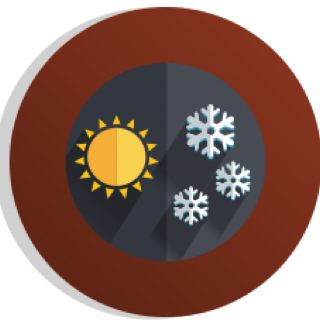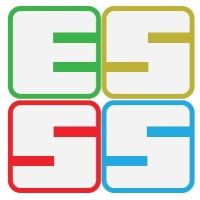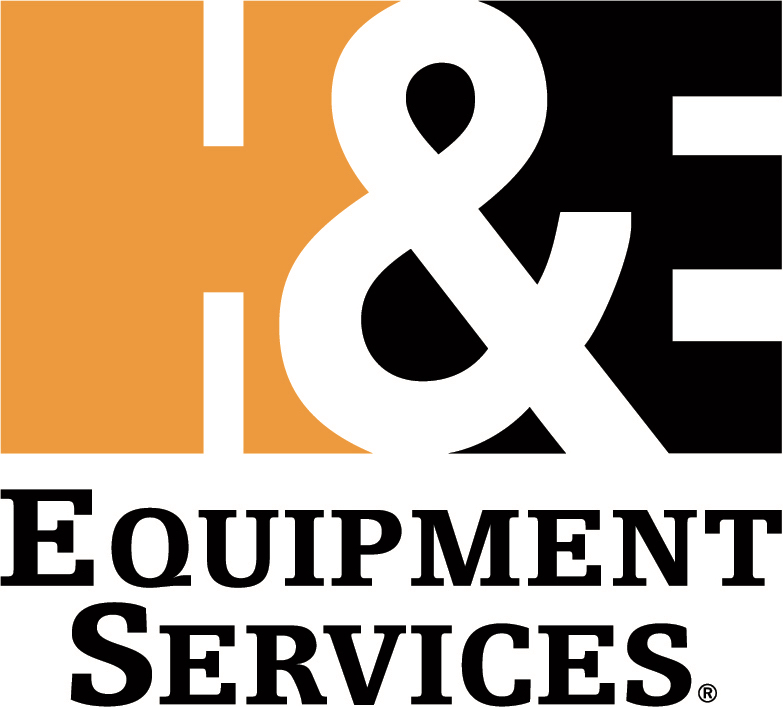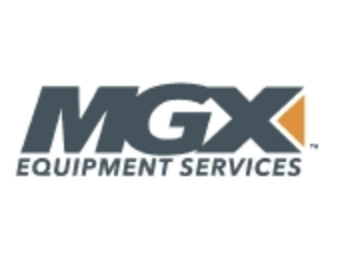Information
-
Inspection Date:
-
Client:
-
Requested by:
-
Address:
-
-
Inspection Terms:
-
Inspection Visit
- 1 of 2
- 2 of 2
- 1 of 4
- 2 of 4
- 3 of 4
- 4 of 4
-
Report Prepared by:
Equipment Inspection Checklist
Packaged-Rooftop Units (RTU)/Make-Up Air Units (MUA)/Air Handling Units (AHU)
-
Packaged-Rooftop Units (RTU)/Make-Up Air Units (MUA)/Air Handling Units (AHU) equipment(s) inspected on this maintenance visit?
-
Equipment(s) inspected this visit
- Packaged-Rooftop Units (RTU)
- Make-Up Air Units (MUA)
- Air Handling Units (AHU)
-
Visual inspection of equipment housing/cover for damage
-
Visual inspection of burner section(s) - advise if cleaning is required
-
Inspect gas line(s) and shut off valve(s) to equipment
-
Inspection of heat exchanger(s) - for cracks, soot and rust
-
Visual inspection of condenser coil(s) - comment on damage/if cleaning required
-
Check drain pans and p-traps
-
Check operating refrigerant pressures
-
Check compressor(s) and component(s) - observe operation and check amp draw
-
Check compressor O/H switches
-
Check voltage and amp draw on condenser fan motor(s)
-
Check condenser fan blades and rotation
-
Check winter operation components (i.e. low ambient, fan cycling switch, crank case heater)
-
Check voltage and amperage draws on blower motor(s)
-
Check and adjust equipment belts/pulleys
-
Check blower motor shaft and bearings (lubricate if needed)
-
Check manifold gas pressure(s)
-
Check gas valve operation
-
Check ignition control for proper operation
-
Check and clean ignitor, tubing and flame sensor
-
Check and verify controls/thermostat operation
-
Check evaporator coil (indoor coil) and advise on condition
Split Systems (SS)
-
Split System Equipment Inspected on this Visit?
-
Check electrical disconnect and confirm operation
-
Check compressor amp draw and compressor contactor
-
Visual inspection of condenser coil
-
Check system head pressures
-
Check winter operation components (i.e. low ambient, fan cycling switch, crank case heater)
-
Check evaporator coil (indoor coil) and advise on condition
-
Check indoor section blower motor amp draw
-
Check evaporator coil condensate drain, drain pan and/or condensate pump
-
Check to ensure the control(s)/thermostat(s) are functioning properly
-
Check return air filter(s)
-
Corrective measure(s) taken:
Air Cooled Condenser Units (ACC)/Condensing Units (CU)
-
Air Cooled Condenser Units Inspected on this Visit?
-
Air Cooled Condenser equipment inspected on this maintenance visit
- Yes
- No
- N/A
-
Check electrical disconnect/electrical supply
-
Visual inspection of condenser coil (comment on cleanliness/damage)
-
Visual inspection of all piping to and from condenser unit
-
Check condenser fan blades and connection to shaft
-
Check condenser fan operation (check amp draw)
-
Check all electrical wiring and tighten any loose connections
-
Check all contactors to ensure proper operation and contact point for wear
Heat Pumps (HP)
-
Water Source Heat Pumps Inspected on this visit?
-
Heat Pumps inspected on this maintenance visit
- Yes
- No
- N/A
-
Check electrical disconnect to equipment
-
Check condition of evaporator coil
-
Check operating refrigerant pressures
-
Check amp draw on compressor(s)
-
Inspect/check exhaust fan motors (amperage/voltage)
-
Check compressor safeties
-
Check blower motor amp draw
-
Check blower belt condition and/or adjust tension as required
-
Check electrical connections and wiring for tightness
-
Check drain pan and drain tubing/piping to ensure they are clean
-
Check water balancing valve setting (water flow)
-
Replace filter(s) or clean if washable type
-
Check and test thermostat operation
Cooling Towers (CT)/Evaporative Condensers (EC)
-
Cooling Towers Inspected on this Visit?
-
Cooling Tower equipment inspected on this maintenance visit
- Yes
- No
- N/A
-
Check general condition of unit and for any unusual noise or vibration
-
Check and inspect air inlets and clean as required
-
Check interior of equipment for corrosion or excessive scaling (provide comment)
-
Inspect water distribution system and spray nozzle and clean as required
-
Check drain pan and pan strainer (clean as required)
-
Check bleed off valve operation and rate
-
Check operation of make-up water valve
-
Check fan motor voltage and amperage
-
Check condition of fan blades and direction of rotation
-
Lubricate fan(s) as required
-
Check belts and adjust tension as required
-
Check drive alignments
Exhaust Fans (EF)
-
Exhaust Fan equipment inspected on this visit?
-
Inspect exhaust fan electrical disconnect(s)
-
Visual inspection of exhaust fan housing
-
Check voltage and amp draw on exhaust fan motor(s)
-
Lubricate exhaust fan motors/bearings
-
Inspect/check exhaust fan drive shafts
-
Check and adjust exhaust fan belts/pulleys
Radiant Heaters (RH)/Unit Heaters (UH)
-
Radiant Heaters/Unit Heaters inspected on this maintenance visit?
-
Radiant Heaters inspected on this maintenance visit
- Yes
- No
- N/A
-
Unit Heater equipment inspected on this maintenance visit
- Yes
- No
- N/A
-
Visual inspection of radiant/unit heater burner(s)
-
Visual inspection of heat exchanger (comment on condition)
-
Visual inspection of radiant heater tubing/shielding
-
Check and inspect venting and air intakes
-
Visual inspection gas lines/ supports and equipment shut off gas valves
-
Check and test unit/radiant heater thermostat(s)
Boilers (B)
-
Were any boilers inspected on this inspection visit?
-
Boiler units inspected on this maintenance visit
- Yes
- No
- N/A
-
Visual inspection of exterior of boiler housing
-
Ensure the boiler area is clean and unobstructed
-
Check boiler fresh air intake is clear and unobstructed
-
Visual inspection all piping and valves connected to boiler (including gas line)
-
Inspect burner(s) and provide cleaning
-
Check and inspect boiler heat exchanger (comment on condition and provide cleaning as required)
-
Provide visual inspection of the interior of boiler and inspect refractory panels
-
Inspect ignitor assembly and flame sensor (clean/adjust)
-
Check all wiring connections and terminals
-
Visual inspection of boiler venting for corrosion, rust, soot and/or separation
-
Visual inspection of draft hood and interior of venting
-
Turn boiler on and observe firing cycle (observe flame)
-
Check operation of gas valve and check manifold gas pressure
-
Check to ensure gauges are working and are readable
-
Check and test boiler safety controls
-
Check water pressure to boiler
-
Inspect and test low water cut off
-
Inspect boiler relief valve
-
Check flow switch
-
Check boiler circulator pump (and lubricate as required)
-
Check and test boiler control operation
-
Provide a combustion analysis
Hot Water Tanks (HWT)
-
Are there any hot water tanks inspected on this maintenance inspection?
-
What type of hot water tank(s) we inspected on this visit?
-
Electrical
-
Electrical HWT unit(s) inspected on this maintenance visit
- Yes
- No
- N/A
-
Check electrical connection to HWT
-
Inspect and test the HWT relief valve
-
Check drain valve of tank
-
Provide a flushing of the tank
-
Natural Gas
-
Natural Gas HWT unit(s) inspected on this maintenance visit
- Yes
- No
- N/A
-
Is there a service manual ext to unit?
-
Ensure area around tankless water heater is clear and free of flammable materials
-
Provide of visual inspection of exterior of hot water tank (comment on anything unusal)
-
Inspect all HWT piping, valves and drain
-
Check gas piping and shut off valve to hot water tank
-
Check HWT burner including ignitor (provide cleaning if required)
-
Inspect and test HWT relief valve
-
Check HWT control setting (provide comment if adjusted)
-
Check operation of power vent (clean if necessary)
-
Visual inspection of vent piping (and intake piping if applicable)
-
Turn on HWT tank observe operation
-
Provide tank flushing
-
Tankless
-
Tankless unit(s) inspected on this maintenance visit
- Yes
- No
- N/A
-
Is there a service manual next to unit?
-
Ensure are around tankless water heater is clear and free of flammable materials
-
Check that unit is properly mounted and support to wall
-
Visually inspect the tankless water heater for any signs of damage
-
Check all related piping and for an signs of corrosion, damage or leaks
-
Check and clean the water filter
-
Check and inspect burner section and clean if required
-
Check the air intake or vent outlet for any blockages and/or damage/separation
-
Inspect and test tankless water heater relief valve
-
Check condensate drain and valve
-
Check units controls and temperature settings
-
Turn tankless heater on and observe operation
-
Provide a flushing of the tankless unit
Findings | Recommendations | Sign-Off
Preventative Maintenance Findings
-
Are there any equipment/component issues discovered during this audit?
-
Maintenance Summary: All HVAC equipment inspected on this visit operating normally at this time.
Equipment Issue Summary
-
Equipment Type:
-
Make:
-
Model No.#
-
Serial No.#
-
Model No.# | Serial No.#
-
Fault:
-
Cause:
-
Diagnosis:
Component Issue Summary
-
Accessory Type
-
Component
-
Specifications
-
Part No.#
-
Add media
-
Issue/Fault
-
Cause
-
Diagnosis
Equipment Replacements/Additions
-
Has any of the equipment covered under this maintenance agreement been replaced since the last inspection?
-
New Replacement Equipment (Please Update Files)
New Equipment
-
Equipment Type
-
New Equipment Make
-
New Equipment Model No.
-
New Equipment Serial No.
-
Replaces (previous equipment as noted)
-
Has any additional HVAC equipment been installed at this facility since the last maintenance inspection?
-
Newly Added HVAC Equipment
New Equipment
-
Equipment Type
-
New Equipment Make
-
New Equipment Model No.
-
New Equipment Serial No.
-
Equipment Notes/Details (i.e. filter/belts sizes and quantities)
Maintenance Audit Sign-Off
-
This maintenance inspection was completed as per
- Refer Agreement
- As Per Request
- As Per Discussion
-
Is there an authorised person available for a maintenance sign-off?
-
Any issues that have been discovered during this maintenance visit have been conveyed or will be conveyed to the appropriate personnel and they have advised or will advise the corrective measures that are to be undertaken. I acknowledged that Fiscom Air Systems Inc. has preformed and completed the regular scheduled maintenance inspection work as outlined herein, as per the Maintenance Agreement.
-
Authorized Signature
-
Any issues that have been discovered during this maintenance audit will be conveyed to the appropriate person via email correspondence and if required, they will be advised of any corrective measures that are to be undertaken. No corrective work will be undertaken unless written consent to proceed on any above mentioned recommendations is provided in writing.
-
Equipment Inspection Requested By:
-
Is there an authorised person available for a maintenance sign-off?
-
Labour Summary
Service Technician
-
Service Technician(s):
- Cemil Uygur
- Ali Uygur
-
Time spent on-site:
- 1 hr (minimum charge)
- 1.5 hrs
- 2.0 hrs
- 2.5 hrs
- 3.0 hrs
- 3.5 hrs
- 4.0 hrs
- 4.5 hrs
- 5.0 hrs
- 5.5 hrs
- 6.0 hrs
- 6.5 hrs
- 7.0 hrs
- 7.5 hrs
- 8.0 hrs
- 8.5 hrs
- 9.0 hrs
- 9.5 hrs
- 10.0 hrs
- 10.5 hrs
- 11.0 hrs
- 11.5 hrs
- 12.0 hrs
- 12.5 hrs
- 13.0 hrs
- 13.5 hrs
- 14.0 hrs
- 14.5 hrs
- 15.0 hrs
- 15.5 hrs
- 16.0 hrs
-
Any issues that have been discovered during this maintenance visit have been conveyed or will be conveyed to the appropriate personnel and they have advised or will advise the corrective measures that are to be undertaken. I hereby acknowledge that kelvinaire Climate Control Solutions has preformed and completed the regular scheduled maintenance inspection work as outlined herein, as per the Maintenance Agreement.
-
Authorized Signature
-
Labour Summary
Service Technician
-
Service Technician(s):
- Cemil Uygur
- Ali Uygur
-
Time spent on-site:
- 1 hr (minimum charge)
- 1.5 hrs
- 2.0 hrs
- 2.5 hrs
- 3.0 hrs
- 3.5 hrs
- 4.0 hrs
- 4.5 hrs
- 5.0 hrs
- 5.5 hrs
- 6.0 hrs
- 6.5 hrs
- 7.0 hrs
- 7.5 hrs
- 8.0 hrs
- 8.5 hrs
- 9.0 hrs
- 9.5 hrs
- 10.0 hrs
- 10.5 hrs
- 11.0 hrs
- 11.5 hrs
- 12.0 hrs
- 12.5 hrs
- 13.0 hrs
- 13.5 hrs
- 14.0 hrs
- 14.5 hrs
- 15.0 hrs
- 15.5 hrs
- 16.0 hrs
-
Any issues that have been discovered during this property's maintenance visit will be conveyed to the appropriate person via email and if required, they will be advised of any corrective measures that are to be undertaken.















